
Libelium has developed a solution to smart manage waste collection routes and the state of containers of any city
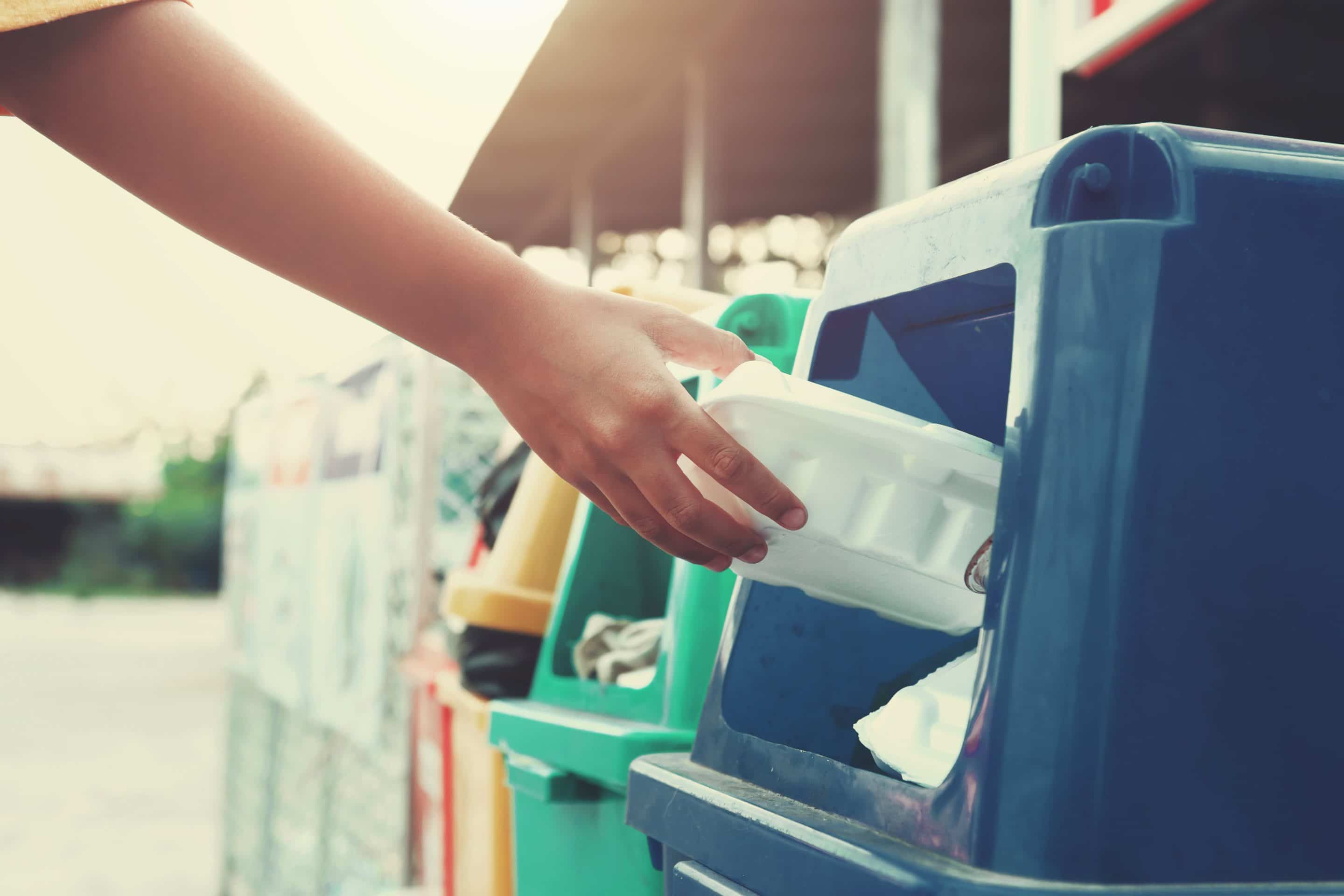
Waste management is an essential service in cities and towns, but its management is still very traditional. Pre-defined routes on a fixed schedule and carried out by highly polluting trucks (gases, noise and fuel).
From the services offered by a city council, this is probably the one with the greatest room for improvement with the application of IoT technology. If municipalities want to improve this service while achieving significant savings in costs and resources, they must consider its digitization now.

In order to apply IoT technology to improve this service, Libelium has developed a smart solution to manage waste collection routes and the state of containers of any city. The solution collects real-time information on the filling level of the containers and transfers it to a software platform for its analysis and subsequent decision-making.
» The challenge
Understand the dynamics of a city waste generation to redesign more efficient and cost-effective routes.
» The solution
Smart Waste Management solution in several dump containers with Sigfox connectivity.
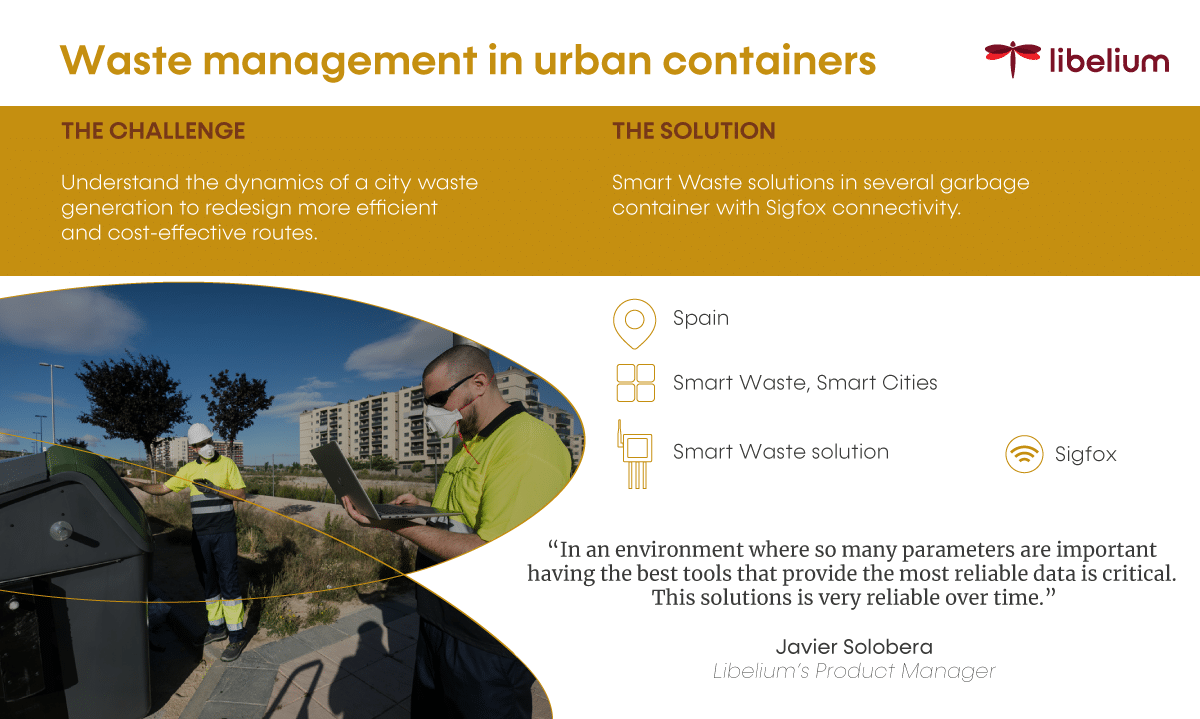
Libelium Smart Waste Management Installation
To test the solution, eight devices were installed in the containers. There are two kinds of devices: basic node and high accuracy node.
While the basic node has a measuring range of 3 to 170 centimetres and recognizes the accelerometer void and an advanced tilt algorithm. On the other hand, the high-accuracy node has a range of up to 4 meters thanks to its four ultrasound beams.
Both devices work with Sigfox, but they also work with other types of connectivity like LoRaWAN. These connectivities allow measurement times of 24x a day which provide top accurate information in real-time.
The sensors send the data to the software platform where it is processed into highly useful information.
Let’s see how!
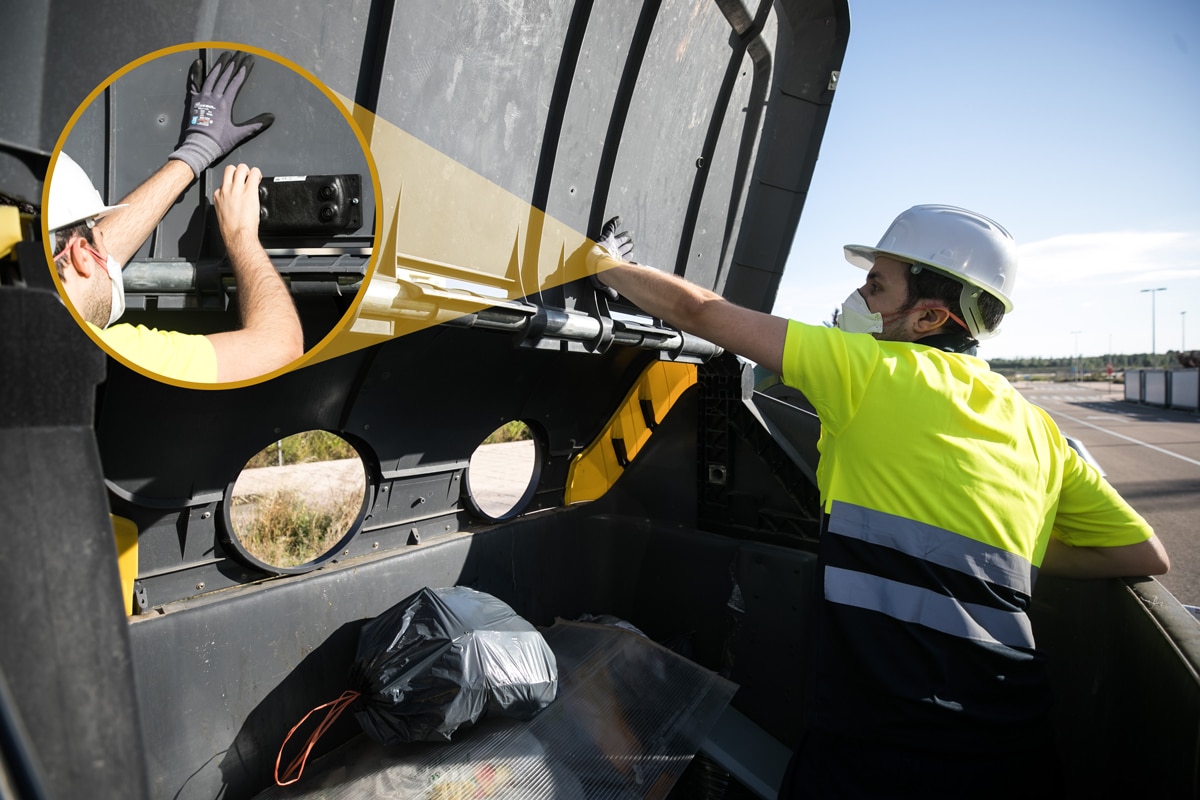
Smart improvement of waste management
The software dashboard shows the container’s fill levels from the data gathered by the smart sensors. The filling level is the key aspect around which a waste management company can develop its strategy.
Once the software checks the fill level of the containers, it can predict when the container will be fully filled by following the history data. The sensors also measure dump movement; so the user can check when the container was last picked up.

With real-time data and predictions, waste management companies, and thus, municipalities, can pick up overflowing bins or stop collecting empty containers.
- With this data on hand, Libelium users quickly realized that they could make improvements to the city’s waste collection system:
- Redesigning garbage truck routes to make them more efficient, improving environmental care (lower fuel costs) and quality of life of citizens (less bad odours and noise).
- Understanding the dynamics of waste production to relocate containers and bins in strategic locations or increase their capacity to save collection costs.
- Re-planning the city’s container map in search of maximum efficiency in order to save costs to administrators and improve citizens’ comfort.
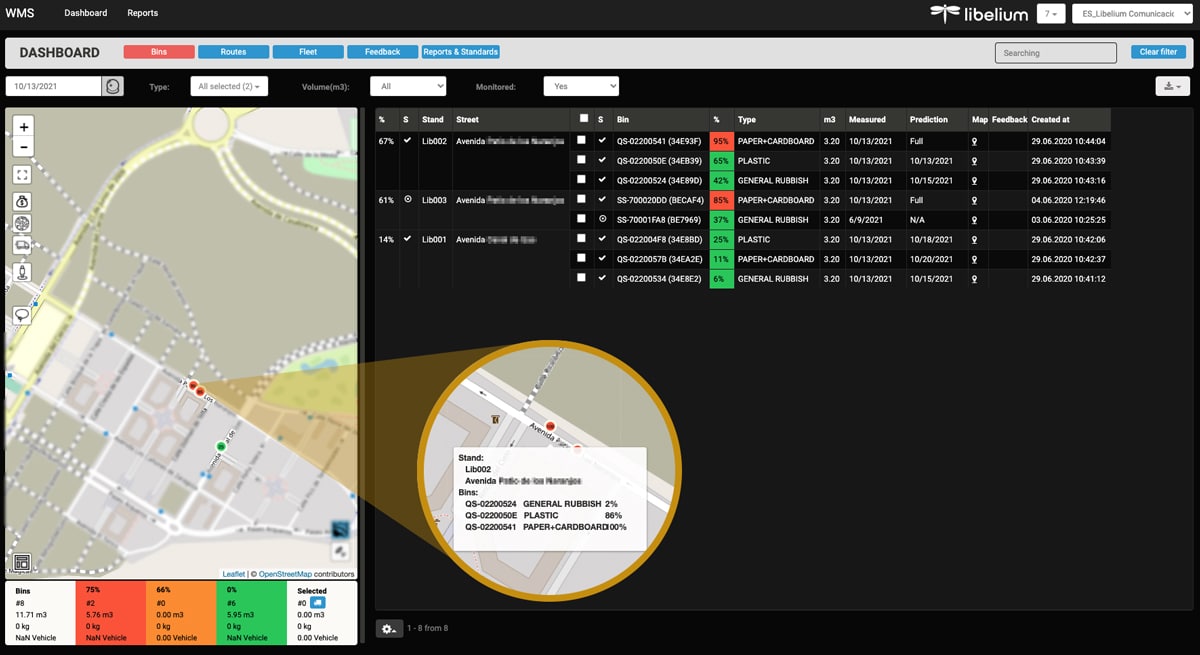
With real-time data and predictions, waste management companies, and thus, municipalities, can pick up overflowing bins or stop collecting empty containers.
- With this data on hand, Libelium users quickly realized that they could make improvements to the city’s waste collection system:
- Redesigning garbage truck routes to make them more efficient, improving environmental care (lower fuel costs) and quality of life of citizens (less bad odours and noise).
- Understanding the dynamics of waste production to relocate containers and bins in strategic locations or increase their capacity to save collection costs.
- Re-planning the city’s container map in search of maximum efficiency in order to save costs to administrators and improve citizens’ comfort.
Establishing special routes for specific hours or periods in which the generation of garbage increases (local holidays, weekends, times for loading and unloading of merchandise).
Discovering areas with a high waste generation that have been unnoticed before.
Initial conclusions of smart waste management
With today’s waste management, the garbage trucks service follows a route regularly and empties containers, whether they are full or not. This means a loss of city resources, both human and material (personnel, fuel, trucks), as well as inconvenience to citizens. Current traditional waste management methods imply a high amount of municipal budget.
The city is not motionless: it has its own rhythm, its breath. So waste collection routes should not be static either.
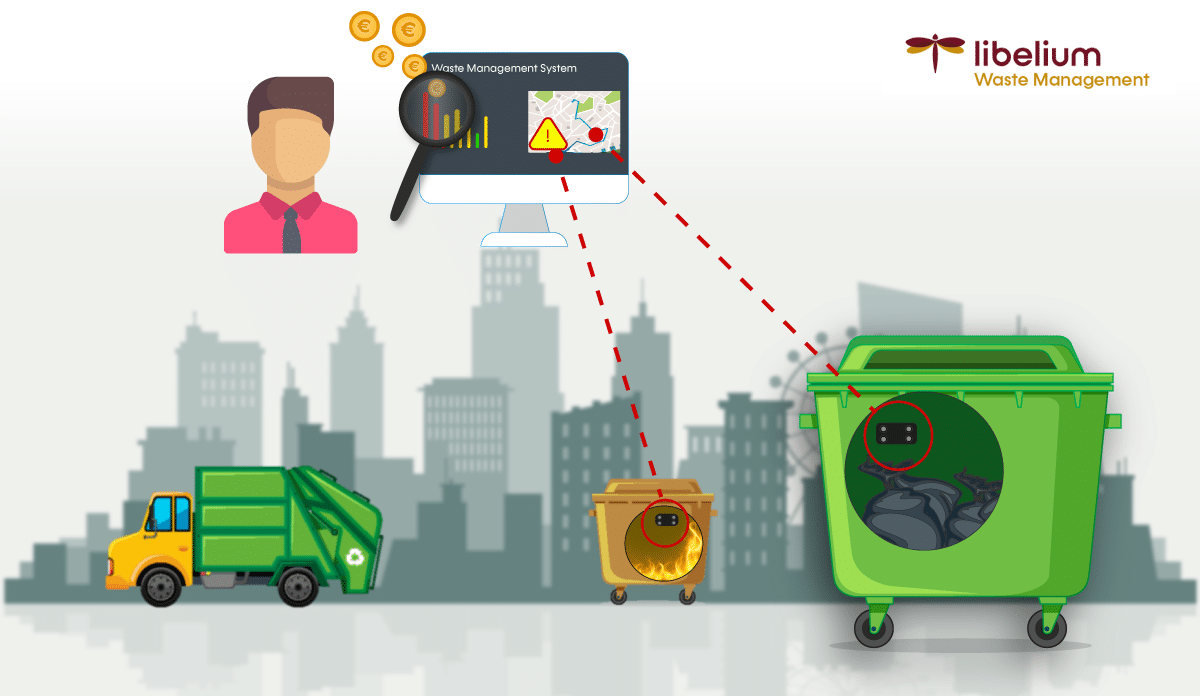
With the appropriate information, it is possible to go from immobile, inefficient and high-cost routes to a dynamic route based on real containers’ filling data. In this manner, municipal coffers achieve relevant savings and citizens can see how their city is less congested, quieter, and of course cleaner.
If citizens are required to separate and deposit their waste in a specific place at a specific time, it is time for municipal managers to apply existing technology to modernize and digitize their waste collection processes.
This case study helps to achieve the following Sustainable Development Goals:
Related Articles
Streetlight integrates Libelium IoT solutions providing digitization to a US campus
California State University Fullerton wants a smart campus with a strong focus on safety and connectivity to support the GI2025 initiative. Modernizing the campus by offering services such as smart parking, Electric Vehicle Charging, WiFi will make it more attractive for new students. It will also help to detect those barriers that users face every day and ease their daily lives on campus.
Smart Cities solution integrated in ENE.HUB’s pole SMART.NODE™, a company of Australian origin that designs Smart Poles, has been in charge of providing the necessary infrastructure to this Californian university to make the leap to digitization.
Environmental monitoring in the construction of a highway with Libelium
FULCRUM engineering, thanks to its eNatura system (enatura.eus), is responsible for monitoring environmental impacts, using a series of Libelium sensors to monitor parameters related to the environmental impact during the construction of highway, the Bilbao Metropolitan South Bypass.
Precision agriculture and automatic irrigation in organic crops with Libelium’s IoT technology
In Sardinia, Consulmedia, a systems integrator with valuable experience on this Italian island, has developed an Agriculture 4.0 project using data from Libelium sensors.



